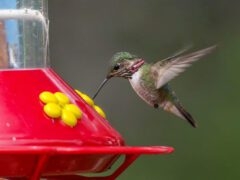Black-tailed Gnatcatcher Photo Gallery
Breeding male
Tiny, slim songbird with a thin, straight bill, and a long tail. Gray overall with a mostly black tail. Breeding males have a black cap.
© Sharif Uddin / Macaulay LibraryCalifornia, March 15, 2020Female
Tiny songbird with a thin bill and long tail. Females are grayish above and whitish below. Their tail is mostly black with white tips on the outer tail feathers that are visible in flight and from underneath when perched.
© Russ Morgan / Macaulay LibraryArizona, December 09, 2018Breeding male
Quickly hops from branch to branch in search for insects among desert trees and shrubs.
© Larry Arbanas / Macaulay LibraryArizona, May 01, 2006Not all videos have soundNonbreeding male
Small and dainty with a small bill and long tail. Grayish above and white below. Note black line above the eye on nonbreeding males.
© Adam Jackson / Macaulay LibraryCalifornia, November 19, 2017Breeding male
Breeding males have a black cap. Note the white ovals on an otherwise black tail.
© Louis Hoeniger / Macaulay LibraryArizona, March 17, 2018Breeding male
Found in thorny scrublands featuring mesquite, creosote bush, ocotillo, and cactus in southwestern U.S. and northern Mexico.
© Larry Arbanas / Macaulay LibraryArizona, May 06, 2006Not all videos have soundBreeding male
Tiny grayish songbird with a black tail that it often flicks. This video has no audio.
© Timothy Barksdale / Macaulay LibraryCalifornia, February 01, 1997Not all videos have soundBreeding male
Small energetic bird with an expressive tail. The tail is mostly black except for white spots on the outer tail feathers. Those white edges form ovals on a closed tail as seen from beneath.
© Aaron Boone / Macaulay LibraryTexas, June 20, 2020Habitat
Found in desert scrub with ocotillo, prickly pear, cholla, and mesquite as well as washes densely lined with creosote and salt bush.
© Jay Watson / Macaulay LibraryArizona, April 02, 2017Compare with Similar Species
Click on an image to compare
Species in This Family
Gnatcatchers(Order: Passeriformes, Family: Polioptilidae)
Don't miss a thing! Join our email list
The Cornell Lab will send you updates about birds,
birding, and opportunities to help bird conservation.











